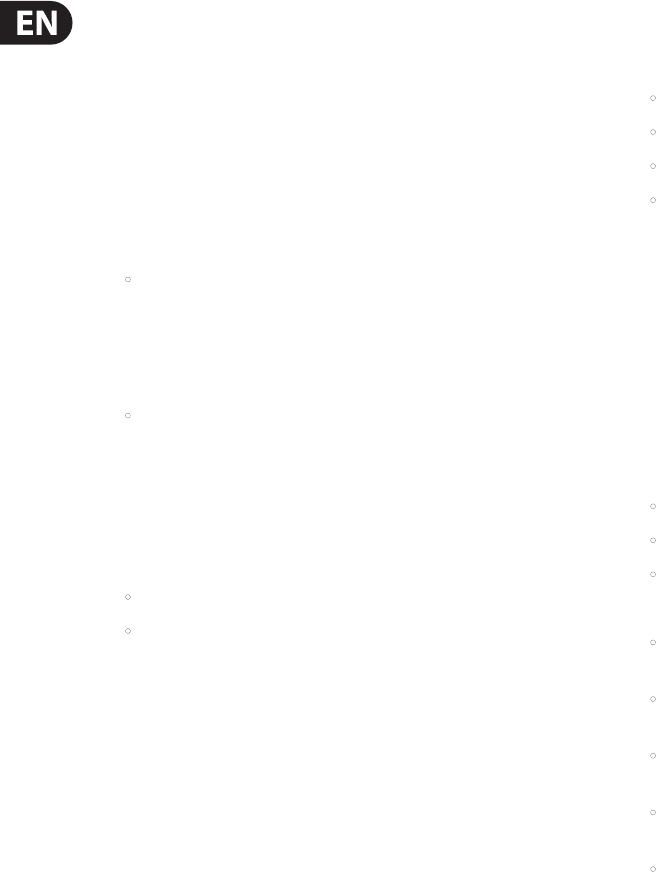
52 X32 COMPACT DIGITAL MIXER User Manual
7.5.2 Setup Screen: Cong Tab:
The setup screen’s cong tab allows adjustment of various audio-related settings,
such as the console’s base sample rate and use of an internal or external digital
clock. It also oers choices for high-level global settings for how signal path
buses operate.
To adjust the various settings of the cong tab, perform the following steps:
1. Adjust the 1st encoder to select between Console, Show Data, and Libraries
for initialization.
2. Tap the 1st encoder to initialize the console back to its factory state.
• An “are you sure” message will appear. Use the left Page Select key to
cancel out of the operation, or the right key to conrm the operation
and initialize the console.
3. The console’s current rmware is displayed in the rst column of the main
color screen.
• If/when a rmware update is available for the console, the user simply
needs to download the new rmware le to the root level of a USB
thumb drive, attach the thumb drive to the console, and then reboot.
The console will see the rmware le and an update will be done
automatically while booting.
4. Adjust the 2nd encoder to select the digital sample rate of the console.
Choices include:
• 48 kHz
• 44.1 kHz
5. Tap the second encoder to assign the currently selected sample rate.
Tip: Note that the sample rate of the console will be the same sample rate for
any audio recorded to the onboard stereo USB recorder, as well as the sample
rate output by the AES/EBU connector that may get patched into an outboard
recorder. Thus, it is often benecial to select a sample rate that is appropriate for
the medium that recorded audio will eventually be used on.
If the program material being recorded is audio only, with no video component,
then it usually makes sense to set a sample rate of 44.1 kHz. This will ensure that
any audio recorded is compatible with the 44.1 kHz sample rate of commercial
audio CDs.
If the program material being recorded is audio that is meant to accompany
video, then it usually makes sense to set a sample rate of 48 kHz. This will ensure
that any audio recorded is compatible with the 48 kHz sample rate of the various
audio formats used on a video DVD.
6. Adjust the 3rd encoder to set the word clock synchronization of the
console to use its internal digital clock, or slave to an external digital clock.
Choicesfor the clock signal include:
• Internal clock
• External clock from the AES50-A port
• External clock from the AES50-B port
• X-USB card
Note that the graphics at the top of the screen will always display a green led
when the console has achieved proper “digital lock”, from either its own internal
clock or a valid external clock.
7. Tap the 4th encoder to cycle through the dierent settings for the console’s
internal date and time settings.
8. Adjust the 4th encoder to set the value for the currently selected
date/timesetting.
9. Adjust the 5th encoder to select the console’s “Bus Pre-Conguration”.
Thissettings allows the mix bus outputs to be congured in various
combinations of:
• Pre-fader, variable output auxiliary sends
• Post-Fader, variable output auxiliary sends
• Fixed-output sub groups
10. Choices include:
• 8 pre-fader auxiliary sends, 8 post-fader auxiliary sends,
and no sub-groups
• 8 pre-fader auxiliary sends, 4 post-fader auxiliary sends,
and 4 sub-groups
• 6 pre-fader auxiliary sends, 4 post-fader auxiliary sends,
and 6 sub-groups
• 4 pre-fader auxiliary sends, 4 post-fader auxiliary sends,
and 8 sub-groups
• 10 pre-fader auxiliary sends, 6 post-fader auxiliary sends,
and 0 sub-groups
11. Tap the 5th encoder to assign the currently selected conguration.
As the conguration is selected, a display on the right-hand side of the color
screen changes to show the currently selected conguration.


















